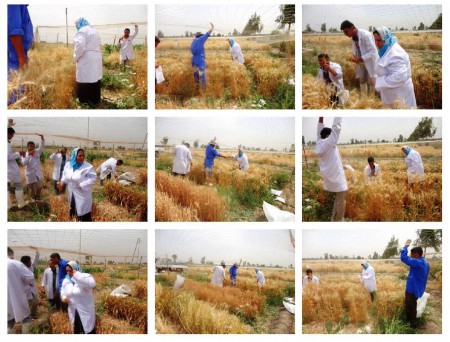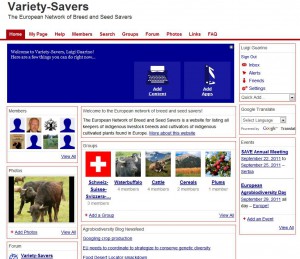 While looking for something else, I happened across a paper describing the Japanese genebank’s new(ish) information system, NIASGBdb. I have some issues about the downloading options (e.g., there are annoying limits to the number of accessions), but it is nice to be able to search both characterization and evaluation data. I know you want to know, so I’ll tell you that the average culm height of accessions with very high resistance to sheath blight is 104cm, whereas that of those with very low resistance is 81cm. And no, I didn’t calculate any standard errors, or do any fancy multivariate statistics. But there’s nothing to stop you doing so.
While looking for something else, I happened across a paper describing the Japanese genebank’s new(ish) information system, NIASGBdb. I have some issues about the downloading options (e.g., there are annoying limits to the number of accessions), but it is nice to be able to search both characterization and evaluation data. I know you want to know, so I’ll tell you that the average culm height of accessions with very high resistance to sheath blight is 104cm, whereas that of those with very low resistance is 81cm. And no, I didn’t calculate any standard errors, or do any fancy multivariate statistics. But there’s nothing to stop you doing so.
Nibbles: Tamil genebank, Econutrition, Sweet perception, Salmon, Texas culinary diversity, Amaranth, Nepal hermarium video, Restoration
- Provincial Indian university gets a genebank.
- Nutritionists go all ecological on us.
- But does that include taking into account human variation in taste perception? I’m betting no.
- The case against GM salmon.
- Going crazy in Austin’s market.
- Amaranth touted in Kenya. Sorghum and local millets unavailable for comment.
- Take a virtual trip around Nepal’s herbarium.
- Society for Ecological Restoration opens online Early Registration for the 4th World Conference on Ecological Restoration, to be held in August in Mérida, Mexico. You guys need a blogger?
Regenerating Iraqi wheat
Our friend Mrs Sanaa and her colleagues have been regenerating wheat accessions dating back to before the Iraqi genebank at Abu Ghraib was destroyed in 2003. You’ll remember that she rescued this material by storing it at her house until the genebank got back on its feet. Many thanks to her for the photos.

Nibbles: Fashion, Climate change meeting, Yams in the Pacific, Poor excuse to quote Bob Dylan song, AnGR, Food in the Pacific, Cacao, Iraqi marshes
- Sustainable fashion, darling.
- “The world’s leading international researchers will review the history of climate change, appraise the current state of the science and identify adaptations for the future.” It says here.
- Fiji suddenly discovers yams.
- Genebank romance in Durango. Well, that felt good.
- Animal Genetic Resources vol 8 is out.
- Locavores go crazy on Guam.
- Cocoa origins celebrated. And why not?
- Seems like every few months there’s something else on how those southern Iraq marshes are being brought back to life. But what I really want to know, and nobody is saying, is if there are any crop wild relatives there.
Variety Savers of Europe try to unite
The European Network of Breed and Seed Savers is a website for listing all keepers of indigenous livestock breeds and culivators of indigenous cultivated plants found in Europe. Variety-Savers should be used to network, to share information, to list events and to sell products and services relating to conservation of European agrobiodiversity.
 Just off the ground, and only 14 members so far, but this looks like an interesting initiative. Especially if it manages to bring formal-sector genebanks closer together with on-farm conservation practitioners and amateur heirloom enthusiasts. You do have to register, but it’s fairly painless, and the website provides some fancy social networking tools. Very best wishes!
Just off the ground, and only 14 members so far, but this looks like an interesting initiative. Especially if it manages to bring formal-sector genebanks closer together with on-farm conservation practitioners and amateur heirloom enthusiasts. You do have to register, but it’s fairly painless, and the website provides some fancy social networking tools. Very best wishes!